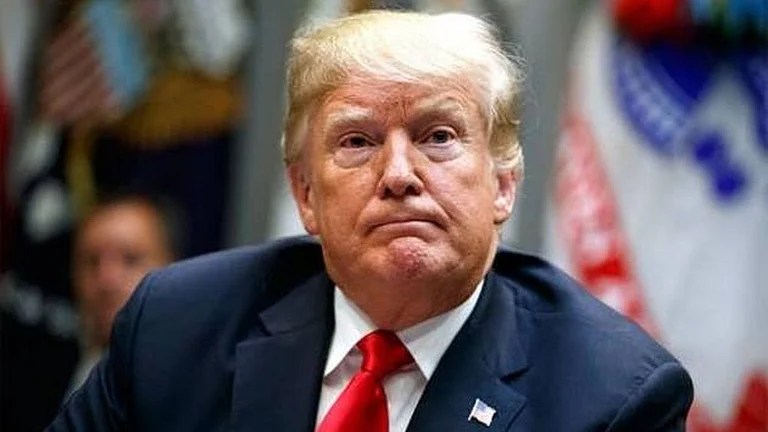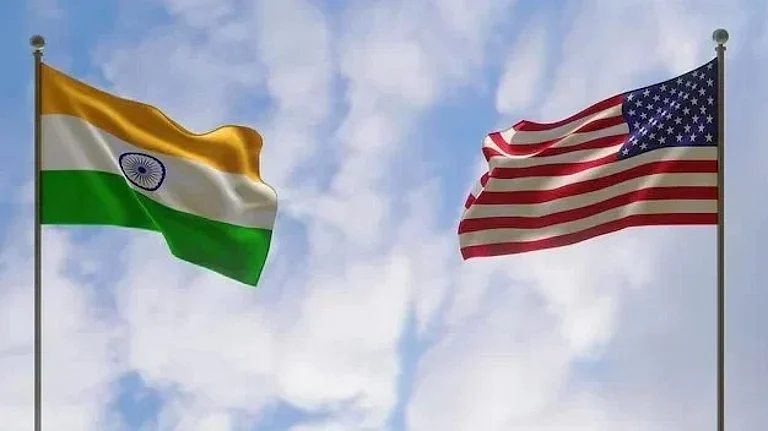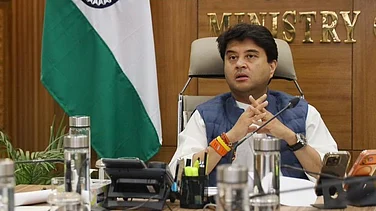US President Donald Trump on April 2 slapped a 26% reciprocal tariff on Indian goods, fulfilling his so-called "Liberation Day" promise. Meanwhile, a separate statement from the White House indicated that India would be subjected to a 27% tariff rate. The move is expected to impact several key Indian industries, though some sectors have been spared—for now.
"For India, a 26% reciprocal tariff rate stands out as a surprise, especially given the warm relationship between Trump and Prime Minister Modi. However, India’s certain sectors enjoy a relative edge over Asian peers," says Amar Ambani, executive director at Yes Securities.
India's key exports to the US include pharmaceuticals, telecom equipment, gemstones, petroleum products, gold jewellery, and ready-made cotton garments. On the other hand, its US imports largely consist of crude oil, coal, petroleum products, electric machinery and aerospace components.
During Prime Minister Narendra Modi's visit to Washington DC, this year, both nations also set an ambitious goal of expanding bilateral trade to $500bn per year by 2030. As of 2024, India enjoys a trade surplus of nearly $46bn with the US, according to the US Trade Representative.
Sectors Hit Hardest
According to the ministry of commerce and industry trade data, the US stands at the top of India's gems and jewellery (G&J) exports, valued at $8,351mn during the April-January period in FY25. This makes it one of the most vulnerable sectors under the new 26% tariffs.
Paresh Parekh, partner and retail tax leader at EY India, warns that there is an adverse impact on the G&J sector, with a real risk of job losses and margin erosions. "The sector has already been struggling since the last few years due to changing customer preferences, lab-grown diamond technology, demonetisation, soaring gold prices, and competition for polishing from other countries," he explains.
He further pointed out that the US is a key market for India's G&J sector, with exports to the country exceeding $11.5bn—accounting for nearly 13% of the sector’s total exports and over 30% of its global shipments. "Till now, India’s tariffs on gold and jewellery imports are around 20%, which is higher than the US import tariff at over 5 %. Earlier, the US levied no tariff on cut and polished diamonds, while India levies 5%," Parekh notes.
Even as the auto ancillary sector was largely untouched by the US on liberation day, it is already subjected to a 25% tariff announced in March. Experts predict that since import duties apply to all trading partners, the extent of the impact will vary across sectors and countries based on competitive advantages.
"For the Indian auto and auto component industry, which derives around 30% of its revenue from exports, with 30% of that coming from the US, this could result in a potential hit on sales or profit margins,” says Mrunmayee Jogalekar, auto and FMCG research analyst at Asit C Mehta Investment Intermediates.
India’s electronics sector is also expected to be affected by Trump’s tariff announcement. However, Ajai Chowdhry, founder of HCL, believes India has an opportunity to strengthen its position.
"What’s interesting is that we’re poised to gain an edge over Vietnam and China in the electronics sector and will likely outperform them. But we must remain vigilant about China’s electronic waste dumping and exercise caution. At no point should we allow ourselves to become a trading colony of China," says Chowdhry.
Sector Spared—For Now
Even as Trump promised to impose tariffs on the pharma industry, it was exempted from immediate tariffs as of now. India exports $12.2 billion worth of pharmaceutical products to the U.S., while imposing a 10% tariff on American pharma imports. Additionally, the semiconductor sector was reprieved too. However, Ambani of Yes Securities feels that the future imposition of reciprocal tariffs remains a possibility over these sectors.
Other exempted sectors include lumber, copper and gold. It also adds energy and minerals, especially certain energy products and minerals that aren’t available in the US.
































